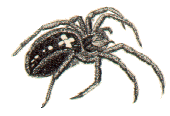 | Pajek datasets
from the book
|
Exploratory Social Network Analysis with Pajek
Wouter de Nooy, Andrej Mrvar, Vladimir Batagelj
Ragusan nobility genealogy.
Dataset Ragusa
Description
Ragusan.ged: a GEDCOM genealogy file containing 5,999 vertices
(members of the Ragusan nobility from the 12th to the 16th century),
9,315 arcs (parent-child relations; if opened in Pajek with
Options>Read/Write>Ore: 1-Male, 2-Female links checked, Father-
child relations hav line value 1 and mother-child relations have line value
2), 2,002 edges (marriages, line value is 0), no loops.
Note that this file also contains the (known) years of birth, marriage and
death, which Pajek automatically stores as vectors on reading the
GEDCOM file.
Gondola_Petrus.ged: a GEDCOM genealogy file containing descendants of
one nobleman, Petrus Gondola, 336 vertices (persons), 450 arcs (parent-
child relations), 113 edges (marriages, line value is 0), no loops. This is a
selection from Ragusan.ged.
Download
complete dataset (ZIP, 150K)
Background
Ragusa, which is now known as Dubrovnik (Croatia, Europe), was settled
on the coast of the Adriatic Sea in the 7th century. For a time, it was under
Byzantine protection, becoming a free commune as early as the 12th
century. Napoleon, having destroyed the Venetian Republic in 1797, put an
end to the Republic of Ragusa in 1806. It came under Austrian control until
the fall of the Austro-Hungarian monarchy in 1918.
In Ragusa, all political power was in the hands of male nobles older than 18
years. They were members of the Great Council (Consilium majus) which
had the legislative function. Every year, 11 members of the Small Council
(Consilium minus) were elected. Together with a duke, the Small Council
had both executive and representative functions. The main power was in
the hands of the Senat (Consilium rogatorum) which had 45 members
elected for one year. This organization prevented any single family, unlike
the Medici in Florence, from prevailing. Nevertheless the historians agree
that the Sorgo family was all the time among the most influential.
The Ragusan nobility evolved in the 12th century through the 14th century
and was finally established by statute in 1332. After 1332, no new family
was accepted until the large earthquake in 1667. A major problem facing
the Ragusan noble families was that by decreases of their numbers and the
lack of noble families in the neighboring areas, which were under Turkish
control, they became more and more closely related - marriages between
relatives in the 3rd and 4th remove were frequent. It is interesting to
analyze how families of a privileged social class organized their relations by
marriage and how they coped with the limited number of potential spouses
for their children.
References
- Irmgard Mahnken (1960): Das Ragusanische Patriziat des XIV.
Jahrhunderts. (PhD dissertation, @)
- V. Batagelj, 'Ragusan families marriage networks' in A. Ferligoj & A.
Kramberger (Eds.), Developments in Data Analysis (Ljubljana: FDV,
1996, 217-228).
- Dremelj P., Mrvar A., Batagelj V.: Analiza rodoslova dubrovaČkog
vlasteoskog kruga pomoću programa Pajek. Anali Dubrovnik XL, HAZU,
Zagreb, Dubrovnik, 2002, 105-126.
- W. de Nooy, A. Mrvar, & V. Batagelj, Exploratory Social Network
Analysis with Pajek (Cambridge: Cambridge University Press, 2004),
Chapter 11.
History
- Original author: Irmgard Mahnken (Preußen-straße 46, 66111
Saarbrücken, 2002?)
- Data compiled into GEDCOM file by Polona Dremelj
(diploma thesis, Faculty of Social Sciences, University of Ljubljana,
Slovenia, 1999)
2. January 2004
Pajek datasets /
Exploratory SNA
|